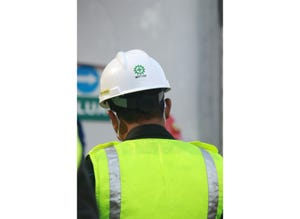Increasing Drying Efficiency
September 9, 2014
Drying processes are one of the most energy intensive unit operations. Drying has been reported to account for anywhere from 12 to 20% of the energy consumption in the industrial sector. Typical adiabatic dryers account for about 85% of all industrial dryers, where air is heated by the combustion of fossil fuels prior to being forced through the product. This type of drying requires high-energy inputs, due to the inefficiencies of such dryers. Often, the exhaust air is simply released to the surrounding ambient air. With increasing concern about environmental degradation, it is desirable to decrease energy consumption in all sectors.
Efficiency calculations are useful when assessing the performance of a dryer, looking for improvements, and in making comparisons between the various classes of dryers which may be alternatives for a particular drying operation. The energy efficiency for convective dryers is usually calculated based on the temperature of the drying medium at the inlet, outlet, and the ambient air temperature.
The basic approach to calculating any energy efficiency, K, is to take the ratio of energy required, Er, to energy supplied, Es:
K = Er/ Es
When considering opportunities for saving energy, it is necessary to view the system holistically, from energy source to exhaust gas recirculation. Potential energy savings must be weighed against other factors, including capital expenditure, safety, emissions, and product quality. The energy efficiency can be calculated for the drying process as a whole (total energy required and total energy supplied), instantaneous efficiency (energy required and energy supplied at given time), or it may be only for the drying chamber, not including other peripheral energy requirements. Some systems allow for the recycling of exhaust heat, which can greatly increase the overall energy efficiency of the dryer. The minimum quantity of heat that will remove the required water is that needed to supply the latent heat of evaporation, so one measure of efficiency is the ratio of that minimum to the energy actually provided for the process.
There are a number of approaches to reduce energy consumption in dryers. For example, the area of contact between air and material, length of the dryer, and the rate at which air moves can all be increased. These factors are best considered during the design of the system and are usually not viable options for retrofit because of space limitations and/or reductions in the rate of system’s output.
One effective way to reduce the energy required for the drying process is to use mechanical means, such as filtration, whenever possible to reduce the water content prior to any thermal drying. Drying conditions can be modified or the drying equipment can be modified to increase overall efficiencies. Dryer inputs fit in two categories: those that can be manipulated (e.g., valve, damper, and burner settings, fan speeds, and belt feed rates) and those that are not easily manipulated but that can greatly disturb components of the process (e.g., ambient air temperature and humidity, feedstock composition, and moisture content). During the entire drying process, the gas atmosphere inside the drying apparatus may be monitored and documented continuously with a process gas mass spectrometer. The mass spectrometric data gives important information for optimization of the temperature, pressure and carrier gas parameters in process development, particularly with regard to influencing the sequence of individual drying steps if there are several solvents.
Hybrid drying techniques can also be used, such as combining vacuum or convective drying with electro-technologies (microwave, radio frequency, infrared heating). Hybrid Technologies such as electro technologies, sonic drying, using superheated steam, and heat pump-assisted drying are some of the examples one should consider.
Dilip M, Parikh is president of DPharma Group Inc., Ellicott City, MD, a pharmaceutical technology consulting firm. He is an industrial pharmacist with more than 35 years of industrial experience in R&D, manufacturing, cGMP-complaint facility planning, and operational management at various pharmaceutical companies in Canada and the U.S.
For related articles, news, and equipment reviews, visit our Drying & Thermal Solids Processing Equipment Zone
You May Also Like


